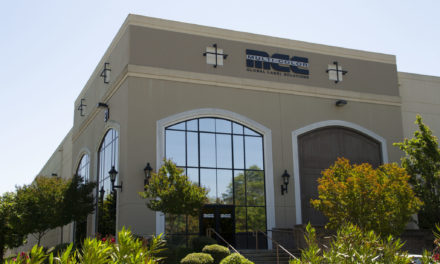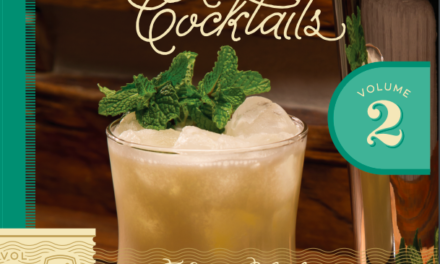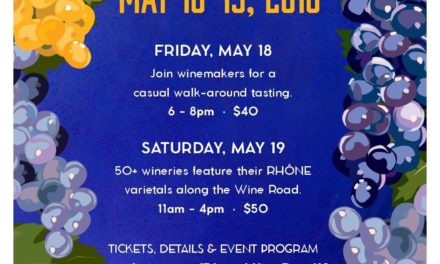Wayne Wambles, brewmaster at Tampa, Fla.’s Cigar City Brewing, who’s known for his work with wood, had a thought: What would an IPA taste like if Spanish cedar were introduced as a flavor component?
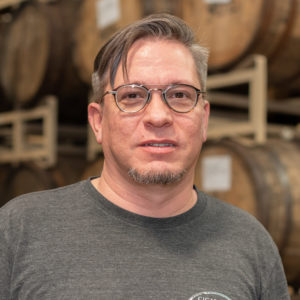
“We’ve done a lot of experimentation with wood, whether I use barrels or infusion technology, which are vastly different methods.” —Wayne Wambles, Cigar City Brewing
His search took him to The Barrel Mill. Richard Hobbs, who handles sales and marketing for the Avon, Minn., cooperage, took on Wambles’ alternate wood concept, producing wood spirals to infuse flavor into his beer. After Cigar City’s resulting brew, Humidor IPA, won a gold medal at the Great American Beer Festival for wood- and barrel-aged beer in 2009, Hobbs has seen demand grow and, in response, has expanded his line of insertable spirals.
The Barrel Mill may have originated these spirals with brewers in mind, but smaller distillers have taken the cue. One, Blue Ridge Distilling in Bostic, N.C., sells a rye and an American single malt that only contact wood via Barrel Mill spirals.
Spirals are only the latest effort by cooperages to provide beverage alcohol producers new ways of introducing flavors and colors into their wares. Barrels of different capacities and shapes; made from various wood sources; repurposed, manipulated, and reused; as well as more contemporary tools that include powder, chips, sticks, staves, and cubes, are all being examined, especially among new brewers and distillers looking to stand out in an incredibly crowded (and growing) marketplace.
“For the market as a whole, premiumization is a real event,” says Jason Stout, vice president sales and marketing for Independent Stave Company (ISCO), the giant firm whose holdings include five wine barrel cooperages, an oak alternative group, two bourbon barrel cooperages, and Kentucky Bourbon Barrel (a full-service used barrel cooperage). “We see wineries and distilleries looking for ways to elevate their products using oak as a value-added component.”
Vastly different methods

“Distillers are becoming more and more interested in the selection of their barrels.” —Caroline Hoogenboom, Charlois Cooperage USA
“Distillers are becoming more and more interested in the selection of their barrels as they aim to create premium small batch spirits and improve the overall quality of their blends,” says Caroline Hoogenboom, sales manager for spirit barrels for Charlois Cooperage USA in Cloverdale, Calif. “There’s a lot more experimentation with char, toast, oak origin, and seasoning.”
“We’ve done a lot of experimentation with wood, whether I use barrels or infusion technology, which are vastly different methods,” says Wambles. “With a barrel, you’re going to get oxygenation, which is beneficial for malt-centric, high-ABV beers. But for a good hop-forward beer, wood infusion is a much better way. With the Spanish cedar, we’re picking up white pepper, white grapefruit, sandalwood, and clove—and that works really well in our American IPA.”
Cigar City’s experience started The Barrel Mill exploring other woods, and now its offerings include not only cedar but cypress and maple. “We just now started offering amburana, a South American wood used in cachaça that, when we toast it, makes the whole facility smell like gingerbread,” says Hobbs.
Wood (and, most generally, oak) influences aging alcohol in three major ways. The first is subtractive, as exposure removes undesirable elements from the liquid, including sulphur. After that comes the additive process, as wood starts contributing its own character to the finished product. The third process is interactive, when flavors and aromas mingle to produce a rounded quality that producers desire. Depending on which distiller you speak with, oak is responsible for anywhere from 50 to 75 percent of the aromas and flavors in a whiskey, for example.

“We see wineries and distilleries looking for ways to elevate their products using oak as a value-added component.” —Jason Stout, Independent Stave Co.
ISCO’s Stout says tinkering with oak attributes to influence flavors has long been a focus in the wine business, with toast levels, oak origin, grain tightness, and seasoning being basic for most higher-end producers. But it’s a relative revolution among spirits producers. “The influx of new producers has resulted in innovation that didn’t exist in the past. For us as coopers, that’s a great opportunity to work with our customers to create different products and use the tools we have to create different flavors.”
Wood 101
In making barrels, the process starts in the forests.
“When looking at wood to select, growth rings per inch is a big factor, as well as grain [tightness],” says Greg Roshkowski, vice president director wood planning/procurement and processing for giant distiller Brown-Forman, which owns its own cooperage. “We’re looking for white oak, 14 to 22 inches thick, from what we call the ‘butt cut,’ meaning it comes from the tree between the stump to the first branching,” he says, explaining that branch knots leak and can’t be used in staves. “The first and, maybe, second cut will be branch free, so we’re talking about a 10- to 12-foot log, maybe 25 feet up before the first branch is established.”
American oak (quercus alba) contains high levels of tyloses and cis-lactone, an important flavor contributor that typically yield vanilla, caramel, coconut, and maple syrup elements. French oak (quercus petraea) is known for fine grain and higher levels of tannin that give spicy, mocha, and nutty notes.
Once selected and logged, trees are sawn into planks or staves and left in the elements to age, a process that leeches tannins and acids. Winemakers typically want oak aged from 24 to 36 months, while for American whiskey, four to five months is usually sufficient. Some brands, however, have staked their flavor development on longer aging. Glenmorangie Scotch Whisky, for example, ages oak for at least two years, while Woodford Reserve whiskey brand gets oak aged nine months. (Given that bourbon must be aged in new oak barrels, spirits like Canadian, Scotch, and Irish whiskies, rum, tequila, and others end up with most of those once-used barrels.)
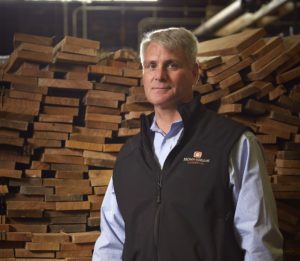
When looking at wood to select, growth rings per inch is a big factor, as well as grain [tightness].” —Greg Roshkowski, Brown-Forman
But more than size matters; ISCO and others offer a range of toasting and charring options for distillers looking to differentiate their products. “We might suggest longer air-dried wood, seasoned 18 to 24 months, and perhaps toasted a little more before being charred to create different extractives,” says Stout. “Some customers are looking for a little more acidity from the oak to create more estery fruit characters, so we manipulate the oak attributes to promote this.”
Experimentation continues
Innovation in the cooperage business was certainly spurred by the new distiller boom, but more established companies are also examining their choices. Kentucky-based Buffalo Trace’s master distiller Harlan Wheatley has been tinkering with oak variables for some time, and now the company is releasing the first in a promised series, Old Charter Oak Bourbon aged in Mongolian oak. In 2019, there will be two other new releases aged in barrels from oak trees harvested in lesser-explored countries. Buffalo Trace has also been examining other American oaks—red oak, pin oak, and laurel oak. Other producers are exploring a return to traditional oak alternatives: Cognac Ferrand currently sells a grape eau de vie double aged in oak and chestnut, and an Old Tom gin that spends time in acacia, for example.
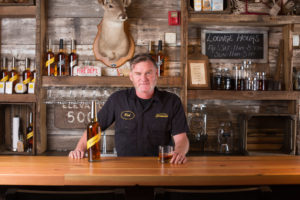
“It’s always about barrels—that’s where we can get innovative.” — Rob Dietrich, Stranahan Distillery
At Denver’s Stranahan Distillery, master distiller Rob Dietrich has started a solera maturation protocol in 620-gallon oak foeders, adding whiskey already aged four years in smaller barrels and, after a time, removing some and replenishing the foeder with some fresh 4-year-old whiskey. “I’m getting a much richer and more unique flavor profile without inherently changing the core essence of Diamond Peak,” he says. “It’s always about barrels—that’s where we can get innovative. We always want the same malt barley whiskey and white oak, but cask finishing or barrel aging in different ways is how we can create new expressions and innovations.”
Many coopers point to the success of Maker’s Mark 46 as a benchmark in the evolution of American whiskey wood aging. The spirit is created by inserting French oak staves into just-emptied barrels, which are then refilled and rested an additional nine weeks. It certainly eased the way for new distillers to use such contemporary options as ISCO’s Wave Stave barrel. It’s made with a medium-plus toast and a low level of char, with ridges cut lengthwise prior to charring that increases the surface area contact with the spirit.
ISCO’s spiral cut barrel has a continuous groove cut after a higher level of charring that creates a significantly increased surface area and resulting faster extraction of flavors. “Both of those barrels are designed for a faster and different kind of extraction of big, bold flavors,” says Stout.
ISCO’s Cooper’s Select and Reserve lines are made with longer-aged oak, customized char, and other options. Aging oak longer before turning it into barrels reduces the amount of acid and tannin that will inevitably leech into the spirit or wine. Changing toast levels will affect vanillin; higher char levels will increase color and sugar extractions.
Wine more traditional
Many winemakers are content to keep using the precisely dialed-in barrels they’ve gotten used to. “As I’ve worked with the fruit here and seen how rich it is, I’m understanding we need the oak structure to support it and show it off better,” says Courtney Foley, winemaker since July 2018 at Chalk Hill Estate in Sonoma County, Calif. Since the 1990s, Chalk Hill has mainly used Francois Freres barrels (made of oak from the Vosges forest) with a medium plus toast, especially for its chardonnay. For its cabernet sauvignon and pinot noir, it looks for other types of oak from other suppliers.

“On the wine side, we see more interest in what some people might call a ‘technical barrel.’” —Chris Hansen, Seguin Moreau
For Foley, quality and consistency are equally important. “We’re willing to shell out a lot of money for our barrels,” she says. “Chalk Hill cut back what it spent on barrels a number of years ago and the wines fell a little flat. Since then, even though the barrels may cost $1,500 each, it brings us the consistency we need.”
Still, wine cooperages have dramatically expanded what they offer. Take the Seguin Moreau Icone line: “On the wine side, we see more interest in what some people might call a ‘technical barrel,’” says Chris Hansen, general manager of the Napa, Calif., cooperage. “A barrel that has some R&D and more technology behind it.”
For the Icone line, Seguin Moreau selects wood based on potential, much the way winemakers select blocks for reserve wines. It analyzes the logs looking at tannins, lactones, and a total of 12 chemical markers it’s identified that either enhance or suppress fruit flavor or aroma in wine. Lactone level is important, as it can provide the perception of sweetness; on white wine, though, too much can give a green or resinous quality to a wine.
Released in 2010, the first Icone, called Elegance, was made from French oak and designed for full-bodied red wines. Now there exists a French oak Icone for whites, one for lighter-styled red wines, and two American oak offerings, one low impact and one more intense.
Demand fuels new options
As Hansen points out, coopers once offered only a few toasting options—perhaps medium, medium plus, heavy, and sometimes light. “Now we’ve really expanded the options, as have others, and we have medium long and extra long toasts. We also have immersion style, water-bent barrel options.”
Cooperages 1912, ISCO’s premium wine barrel division in North America, represents the brands World Cooperage and T.W. Boswell. The latter brand offers a cool climate line that, among other offerings, has a Minerality barrel that’s said to increase this sought-after quality in white wines. “We use water-bent staves and a short toast focusing on tannin and acidity and less of the rich extractives that come from hemicellulose and lignin breakdown,” says Stout. Instead, this short toast at high temperature provides what he calls a “flinty, gunsmoke-like note” familiar to chablis producers.
Overall, whether beer, wine, or spirits, the general trend is definitely toward the use of oak alternatives, especially as producers look to get more flavor in their liquid faster. “At certain price points, barrel aging doesn’t make sense. But producers still want an oak component that adds flavor and value,” points out Stout. Not having to worry about the structural integrity of a barrel lets coopers create flavors from oak via different methods, including 24-hour toasting protocols or alternative heat sources such as convection or infrared heat. Oak Solutions Group, ISCO’s premium oak alternatives division, uses a rebuilt coffee roaster to heat oak chips for 10 hours or more at different temperature levels to create new flavor combinations. And there will surely be producers perfectly poised to give products like those a try.


